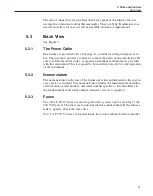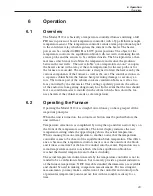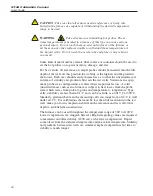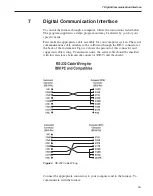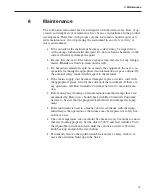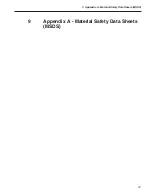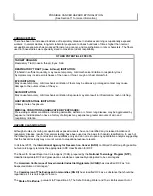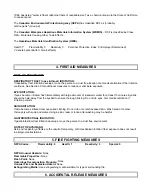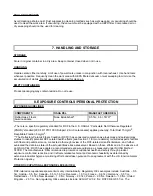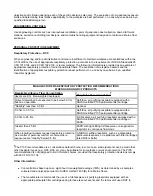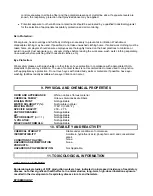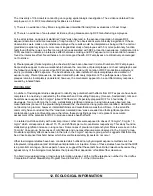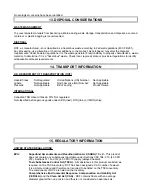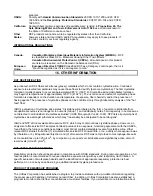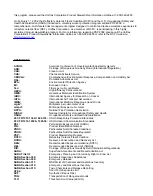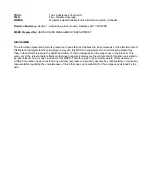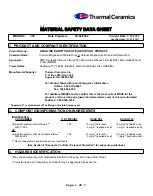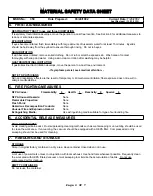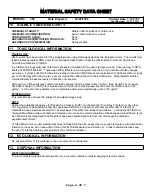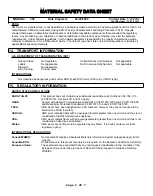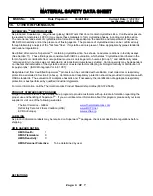
The University of Cincinnati is conducting an ongoing epidemiologic investigation. The evidence obtained from
employees in U. S. RCF manufacturing facilities is as follows:
1) There is no evidence of any fibrotic lung disease (interstitial fibrosis) from evaluations of chest X-rays.
2) There is no evidence of an elevated incidence of lung disease among RCF manufacturing employees.
3) In early studies, an apparent statistical “trend” was observed, in the exposed population, between RCF
exposure duration and some measures of lung function. The observations were clinically insignificant. If these
observations were made on an individual employee, the results would be interpreted as being within the normal
(predicted) respiratory range. A more recent longitudinal study of employees with 5 or more pulmonary function
tests found that there was no effect on lung function associated with RCF production experience. Initial data (circa
1987) seemed to indicate an interactive effect between smoking and RCF exposure; more recent data, however,
found no interactive effect. Nevertheless, to promote good health, RCF employees are still actively encouraged
not to smoke.
4) Pleural plaques (thickening along the chest wall) have been observed in a small number of RCF employees.
Some studies appear to show a relationship between the occurence of pleural plaques on chest radiographs and
the following variables: (a) years since RCF production hire date; (b) duration of RCF production employment;
and (c) cumulative RCF exposure. The best evidence to date indicates that pleural plaques are a marker of
exposure only. Pleural plaques are not associated with pulmonary impairment. The pathogenesis of pleural
plaques remains incompletely understood; however, the mechanism appears to be an inflammatory response
caused by inhaled fibers.
TOXICOLOGY
A number of toxicological studies designed to identify any potential health effects from RCF exposure have been
completed. In one study, conducted by the Research and Consulting Company, (Geneva, Switzerland), rats and
hamsters were exposed to 30 mg/m³ (about 200 fibers/cc) of specially-prepared RCF for 6 hours/day, 5
days/week, for up to 24 months. In rats, a statistically significant increase in lung tumors was observed; two
mesotheliomas (cancer of the pleural lining between the chest wall and lung) were also identified. Hamsters did
not develop lung tumors; however, interstitial fibrosis and mesothelioma was found. Some, in the scientific
community, have concluded that the “maximum tolerated dose” was exceeded and that significant particle
contamination was a confounding issue; therefore, these study findings may not represent an accurate
assessment of the potential for RCF to produce adverse health effects.
In a related multi-dose study with a similar protocol, other rats were exposed to doses of 16 mg/m³, 9 mg/m³, 3
mg/m³ which corresponds to about 115, 75, and 25 fibers per cubic centimeter respectively. This study found no
statistically significant increase in lung cancer. Some cases of pleural and parenchymal fibrosis were seen in the
16 mg/m³ dose group. Some cases of mild fibrosis and one mesothelioma were observed in the 9 mg/m³ group.
No acute respiratory effects were seen in the rats in the 3 mg/m³ exposure group, which suggests that there may
be a dose/response threshold, below which irreversible respiratory impacts do not occur.
Other toxicological studies have been conducted which utilized non-physiological exposure methods such as
intrapleural, intraperitoneal and intratracheal implantation or injection. Some of these studies have found that RCF
is a potential carcinogen. Some experts, however, suggest that these tests have limited relevance because they
bypass many of the biological mechanisms that prevent fiber deposition or facilitate fiber clearance.
To obtain more epidemiology or toxicology information, please call the toll free telephone number for the Unifrax
Corporation Product Stewardship Program found in Section 16 - Other Information.
12. ECOLOGICAL INFORMATION


